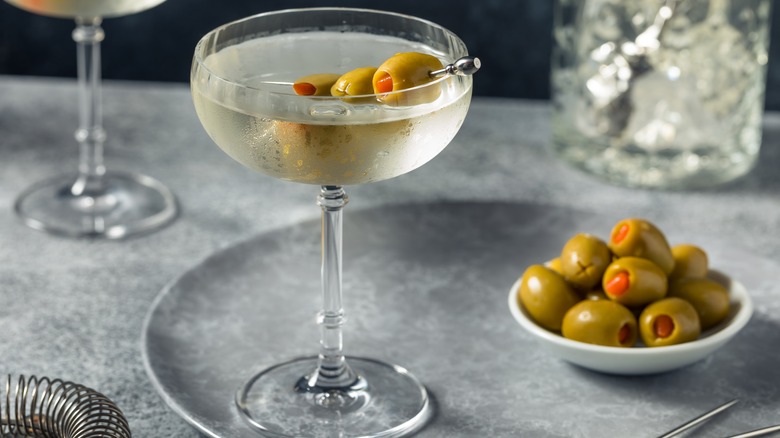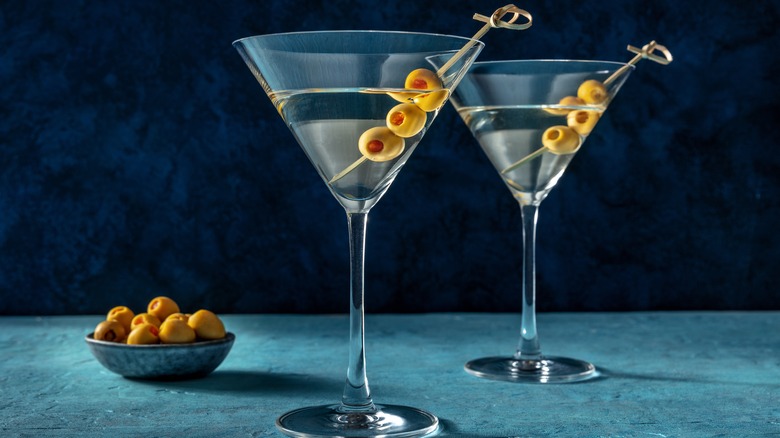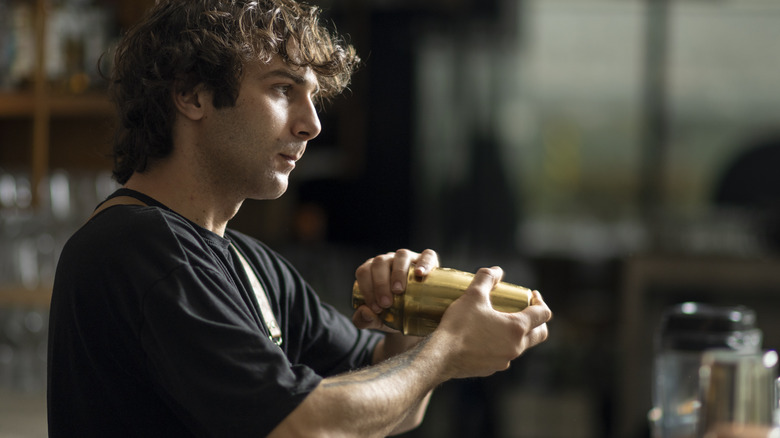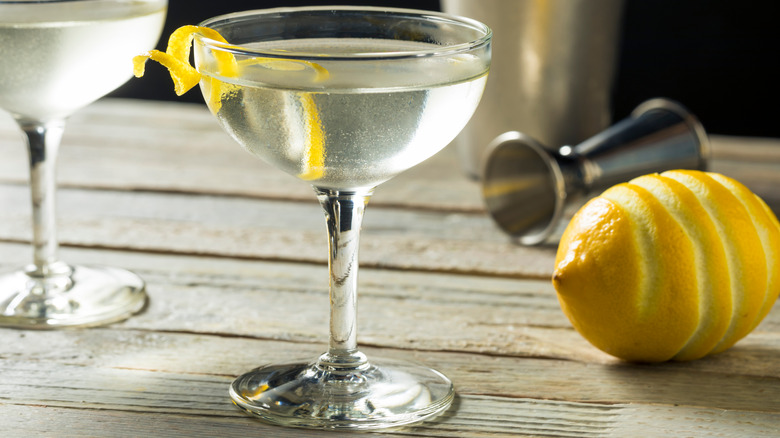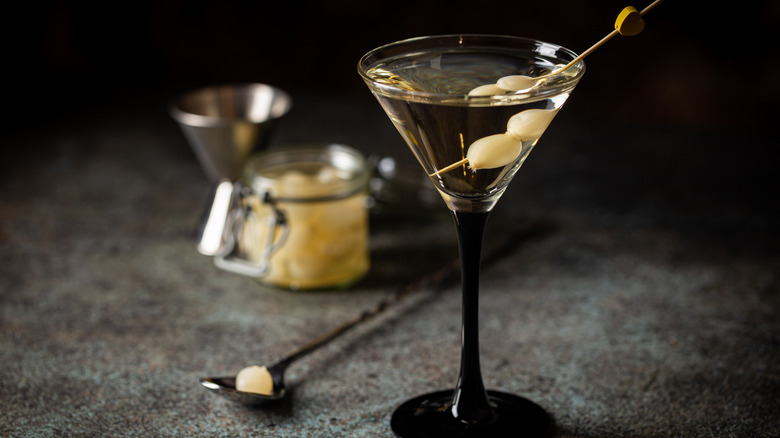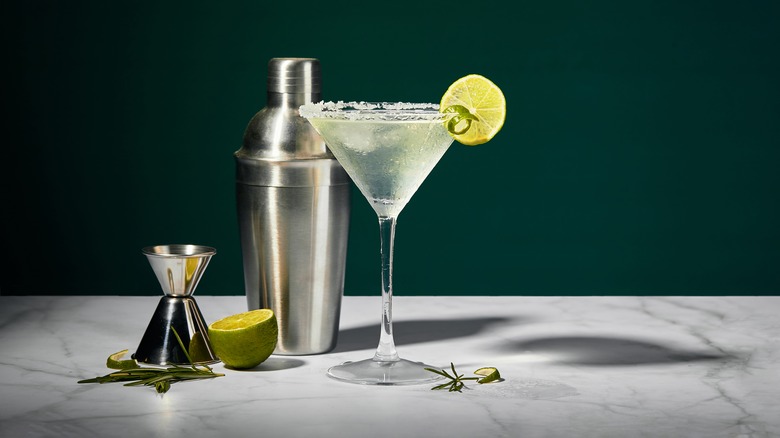The Glamorous History Of The Martini
Like Holly Golightly's little black dress or a Savile Row suit, the martini is a timeless classic. An iconic cocktail that has become a shorthand for cosmopolitan sophistication, it has a history as intriguing and diverse as the personalities who have embraced it. From its origins in the 19th century to its associations with famous figures like Winston Churchill, Ernest Hemingway, and James Bond, the martini has become an enduring symbol of elegance, wealth, and good taste.
The exact origin of the martini remains a subject of endless debate, as well as one of the most contentious stories in cocktail lore. One theory suggests that it evolved from a cocktail called the Martinez, which is itself considered a derivative of the Manhattan. The first recipe for a Martinez cocktail appeared in 1884, and was crafted with gin, sweet vermouth, curaçao, and orange bitters. Meanwhile, the first clear reference to a martini cocktail appeared in the second edition of Harry Johnson's "Bartender Manual" in 1888, which called for a base of Old Tom gin (a sweet gin) with sweet vermouth, Boker's bitters, gum, orange curaçao, and a lemon twist. Another theory suggests that the martini might just be derived from the Marguerite, a drink named after and made with a brand of French vermouth, gin, orange bitters, and lemon peel.
Origin stories of the martini
There are several alternative origin stories to the Martinez cocktail. The first dates back to the late 19th century. Some believe that a bartender named Jerry Thomas invented the Martinez at the Occidental Hotel in San Francisco at the request of a gold miner. Thomas supposedly created the drink by combining Old Tom gin, sweet vermouth, maraschino liqueur, and a dash of bitters. He then garnished it with a lemon peel.
However, the city of Martinez claims that the drink was actually created when a local tavern owner created the drink for a miner who struck gold, and called it the Martinez Special. In this telling, the miner enjoyed the drink so much that he shared the recipe with a bartender in San Francisco.
Regardless of the Martinez's origin, it is widely agreed that the modern martini is a direct descendent of the cocktail. Over time, the drink would become less sweet, and by the time a recipe for a dry martini appeared in the famous Ritz Hotel in Paris, it had lost the sweet liqueurs. Additionally, the sweet vermouth was replaced by a dry variety. Eventually, the sweet version would disappear into history, leaving us with something close to the martini we know and love today.
Churchill, Hemingway, and the modern martini
The original martini, even in its dry form, was made with equal parts gin and vermouth. It would stay that way throughout Prohibition when gin — especially homemade bathtub gin — became the drink of choice for those who could not afford smuggled liquor. During that time, vermouth was used to mask the terrible taste of bad-quality gin. By then, the drink was already popular in Europe, which was heading towards World War II.
Vermouth, a fortified wine, is primarily made in France and Italy — two countries whose vineyards had turned into battlefields during the war. As a result, the amount of vermouth used in a martini slowly decreased. In a famous anecdote, British Prime Minister Sir Winston Churchill allegedly said, "The only way to make a martini is with ice-cold gin, and a bow in the direction of France." (It should be noted that some believe that is a complete fabrication, since Churchill reportedly did not like gin.)
Meanwhile, the legendary American writer, Ernest Hemingway, held the martini in high esteem. Hemingway had a specific way of ordering his martinis. He instructed the bartender to prepare the drink with 15-parts gin to one-part vermouth. He then called it a Montgomery in honor of a British field marshal, Bernard Montgomery, who thought his odds on the battlefield to be 15-1. Because of the war, the amount of vermouth used in a martini was drastically reduced, leaving us with a drink that closely resembles a modern martini.
James Bond and the Vesper martini
Another influential figure closely associated with the martini is none other than the fictional British spy, James Bond. A suave and sophisticated agent, Bond popularized the Vesper martini in Ian Fleming's novel, "Casino Royale." The Vesper, invented by the author in 1953, combined gin, vodka, and Kina Lillet (now substituted with Lillet Blanc). It was famously ordered "shaken, not stirred." However, the Vesper would not be featured in the James Bond cinematic universe until years later, as the first martini ever sipped by the spy was a dry vodka martini, ordered by Sean Connery's Bond in "Dr. No" in 1962.
So, when did vodka become the main component of a martini? Although the spirit started appearing on American drink menus as early as 1905, vodka did not come into martini lore until 1951, when a vodka martini was listed in Ted Saucier's "Bottoms Up," a detailed guide to cocktails that is considered a classic tome for mixology. While many traditionalists contend that gin martinis are the only way to go, vodka's rise in popularity, along with James Bond's endorsement, led to vodka's close association with the cocktail.
Shaken versus stirred
One of the great debates surrounding the art of martini making is whether the drink should be shaken or stirred. Purists advocate for stirring the martini to create a velvety and silky texture, and to preserve the spirit's character. In contrast, a shaken martini incorporates air and melted ice, leading to a more diluted drink. As Jed Bartlet, the fictional president in the political drama television series "The West Wing," once quipped, "Shaken, not stirred, will get you cold water with a dash of gin and dry vermouth. The reason you stir it with a special spoon is so not to chip the ice. James is ordering a weak martini and being snooty about it."
Beyond classic gin and vodka martinis, numerous variations of the cocktail have emerged, each catering to different palates and preferences. One variation of the classic theme is the garnish. Traditionally, a martini is garnished with a lemon peel that is twisted above the drink to shower it with citrus oils, an olive, or both. However, if you garnish the drink with a pickled onion instead of olive, it becomes a Gibson, which has an origin story of its own. One popular story says that Charles Gibson, a prominent illustrator during the late 19th and early 20th centuries, challenged a bartender to improve upon a martini. The bartender simply replaced the olive with a pickled onion, and a new cocktail was born.
Variations of the classic cocktail
Aside from the garnish, another regular variation of a martini is the addition of olive brine, which lends a savory and salty edge to the cocktail and creates a dirty martini. Although bartenders had been adding brine to martinis since the dawn of the 20th century, the label "dirty" was only bestowed upon the drink in the 1980s. To make a dirty martini, fill a beaker with ice and add vodka, a touch of dry vermouth, and olive brine. Stir the mix with a cocktail spoon, and strain the cocktail into a chilled glass. Garnish with a blue cheese-stuffed olive for an umami-packed libation.
Today, martinis come in as many variations as there are bartenders, and the options seem endless. For example, dessert martinis — such as espresso martinis, appletinis, and chocolate martinis — trade vermouth for various sweet liqueurs to create cocktails that could out-sweet even the original Martinez cocktail. Meanwhile, other variations feature ingredients that would be unheard of when the original was born, such as Japanese sake or Peruvian pisco.

